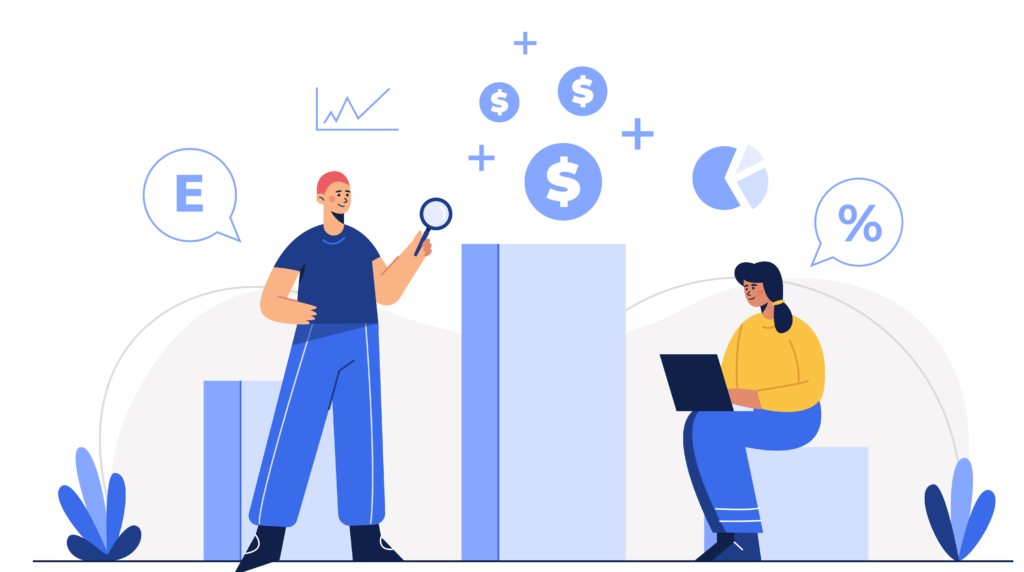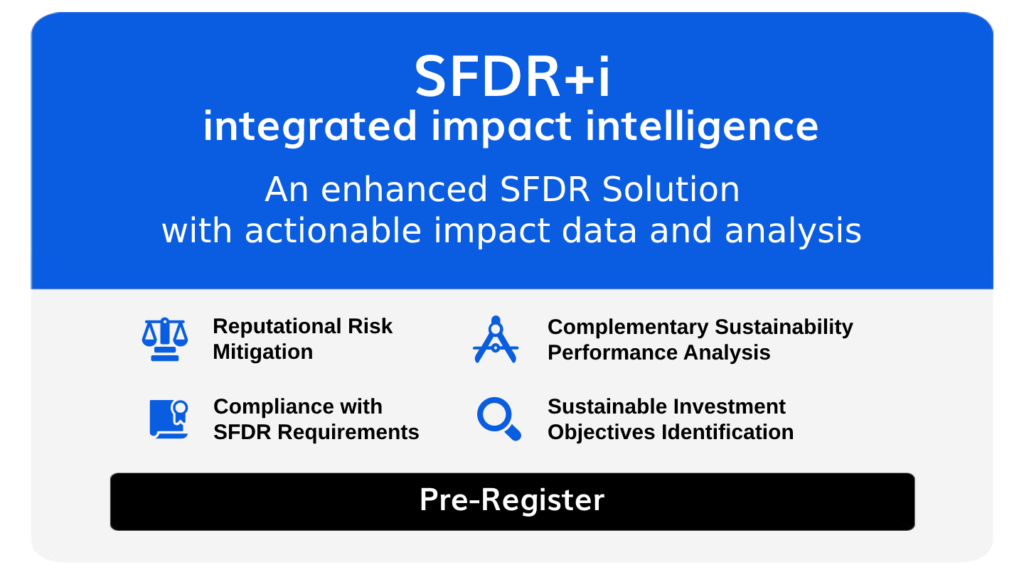SFDR: A minefield or a trust building exercise?
SFDR: A minefield or a trust building exercise?
Between the presumption of greenwashing, the loss of consumer confidence and the risk of funds losing their reputation, the road to sustainable investment seems somewhat steep. And yet, these investments, which should very quickly reach the level of 2,500 billion dollars annually, are vital for the impact economy.
After a dismal track record due to the reclassification of Article 9 funds into Article 8, efforts and education must be reinforced to restore consumer confidence in so-called “sustainable” investments. The aim of the Sustainable Finance Disclosure Regulation (SFDR) is to increase the transparency of financial products in order to prevent greenwashing and to redirect capital flows towards sustainable investments as part of the European Union’s Green Deal. So what happened? Several recent studies and articles highlight the flaws and complexity of SFDR, with the main criticism being the lack of clarity in the very definition of what a sustainable investment should be:
- SFDR says that financial flows must be redirected towards a “transitional” economy, with greater equity, but without giving the tools to do so
- According to SFDR, asset managers must promote transparency and rank their funds according to their sustainability (Art. 6, 8 or 9). But SFDR does not set a threshold between these articles, except for Article 9 which specifies that 100% of investments must be sustainable.
And again, the language of SFDR does not yet define the term “sustainable investing”. Morningstar estimates that less than 5% of Article 9 funds target 90% to 100% exposure to sustainable investments. Only 26 funds target a 100% allocation to sustainable investments. At the same time, Novethic shows that most funds present unclear explanations of their objectives and the approach taken to achieve them, relying on few impact indicators to measure their real contributions. A recent investigation by a group of journalists, published in Le Monde, highlights the carbon-intensive assets of many European green funds classified as Article 9. Finally, some of these funds are also accused of having contributed to the forced labour of the Uyghurs.
This discrepancy between the promises of SFDR and the reality, which probably stems in most cases from an interpretation turned to their own advantage, nevertheless calls into question the quality of these financial products, which are considered the most sustainable on the market in the eyes of the general public. But, as Philippe Zaouati, CEO of Mirova, one of the world’s pioneers in sustainable investment, rightly pointed out, “these analyses are useful, but they too often tend to throw the baby out with the bathwater, suspecting all green finance of greenwashing and failing to distinguish between the different practices that exist on the market”. So here we are, on the eve of the regulation coming into force: distrust and mistrust of sustainable finance for consumers; paired with reluctance and reputational risk for asset managers. In other words, the context is not very favourable for advancing the impact economy. What should finance actors focus on to address both challenges ?
Indicators and, most importantly, impact analysis

If there were only one direction to take as a compass for the entire sector, it would be to use rigorous and transparent measurement methodologies that are commensurate with the changes needed to make a success of the ecological and societal transition of our economies. The current SFDR rules alone will not be able to meet the ambition of the law, i.e. to increase the transparency of financial products in order to prevent greenwashing and to redirect capital flows towards sustainable investments. The solution is for SFDR to be accompanied by tools to measure and evaluate the impact of these investments in order to remove any doubt about possible interpretations. As evidenced by the $2.5 trillion annual shortfall in investments for the SDGs (UN Sustainable Development Goals), we have no more time to wait. Of course, the Covid-19 crisis in no way mitigates this necessary financial effort, which remains colossal.
The financial system has over $379 trillion in assets held by banks, institutional investors and asset managers. Reallocating just 1.1% of this would be enough to fill the growing financing gap for the SDGs. So the resources are available.
SFDR –Reminder of the regulation

An investment is considered sustainable when it is an “investment in an economic activity that contributes to an environmental objective, measured for example through key indicators […], or an investment in an economic activity that contributes to a social objective […], or an investment in human capital […], provided that these investments do not cause significant harm to any of these objectives and the companies in which the investments are made apply good governance practices […].” In essence, the definition of a “sustainable” investment is far too broad and the way it is interpreted differs from one financial actor to another. Indeed, in the absence of clarity, investors have developed their own internal frameworks. However, while SFDR does not explicitly refer to impact, the regulation does include the key concepts of contribution, measurement, and doing no harm. Let’s focus for a moment on these three concepts of impact that we consider to be the key building blocks of a mechanism that would restore confidence in sustainable investments.

Contribution
For an investment to qualify as a positive contribution to sustainable development, the financed activity (i.e., the company’s products/services) will have to contribute to the achievement of the SDGs, verified by a holistic analysis at the company level. A positive impact is defined as a “lasting change in the lives of stakeholders related to an organization’s activities.” Here is an excerpt from a list of criteria we have developed to determine whether or not a company is generating positive impact: Is the impact the organization aims to generate the result of concrete, ongoing activities? Can the objective of the activity be linked to one of the SDG targets? Is the impact truly positive or merely a reduction of a negative impact? Is the theory of change (TOC) valid and recognized? How does the achievement this change translates financially for the company (full list at impakanalytics)
« A positive impact does not make up for a negative impact and it is necessary to conduct a thorough, 360-degree analysis of all of a company’s impacts.»
The path to positive impact begins with intentionality: the company has a clear intention to achieve its goals and is able to articulate exactly the strategy to get there.
The measure
PAIs (Principal Adverse Impacts) are a set of detailed indicators for assessing the negative impacts of companies. However, they do not capture the full scope of the impact. Companies should use a set of indicators and track their progress to make the desired transformation tangible. For example, if a fund sets out to improve access to clean, affordable energy, PAIs do not measure the progress made toward better access to energy.
To measure a positive contribution, we must therefore use other standardized impact indicators, such as those proposed by IRIS+. For example, for a renewable energy company, these impact indicators could take the following forms :
- Calculating energy savings per product sold (in KWh) ;
- Study of the variation in GHG reductions per product sold or service rendered (metric tons);
- Evaluation of the percentage of savings on the household energy budget.
« This critical moment in the implementation of the regulation is an opportunity to establish robust best practices.»
Impact measurement requires a precise and explicit vocabulary, which will require a high level of knowledge from the actors.
The information provided must be clear and complete; evidence must also be provided. Impact measurement should provide a realistic and honest picture of the impact of an organization, its activities, and its projects, to enable informed and educated decision-making by stakeholders. It is in part by creating a clear, transparent and standardized measure that consumers will regain confidence in sustainable investments and funds.
Do Not Significant Harm
DNSH (Do Not Significant Harm) is one of the fundamental principles of SFDR. The concept here is simple: an activity cannot contribute positively and therefore be qualified as “sustainable” if, at the same time, it harms.
Let’s take a concrete example to illustrate this principle with the Danish wind turbine company Vestas. 100% of Vestas’ turnover contributes to increasing the share of renewable energy in the global energy mix (SDG 7.2), which at first glance seems very positive. However, the company must analyze the negative environmental and social impacts of wind turbines on biodiversity, prove its good management of the recycling of blades at the end of their life, evaluate the use of rare earth minerals, and problematic minerals, ensure the respect of human rights, etc. Indeed, these elements can potentially affect the DNSH indicator and offset the positive effect of the contribution.
An ESG analysis of these DNSHs still focuses too much on whether a company has internal policies and procedures in place to prevent these negative impacts from materializing. While it is obviously important to answer this question, it turns out that this data only informs the efforts to implement these practices.
The DNSH principle is at the heart of impact measurement, which stipulates that just because a company contributes positively to the SDGs does not mean that it can ignore its negative impacts. Indeed, a positive impact does not compensate for a negative impact and it is necessary to conduct an in-depth, 360° analysis of all of a company’s impacts.

In order to best analyze the DNSH, beyond validating whether the company has implemented internal policies and procedures on these subjects, impact measurement recommends an in-depth evaluation of the real impacts and results of these practices. Let’s take the example of a company that provides X training. The ESG analysis will only note that the company provides formal training to 451 employees, whereas the impact analysis will determine that the company provides formal training to 451 employees, analyze the scope of the training, assess the results in terms of learning and skills acquired on the job, and then reassess them over time. These concepts are not new and are reflected in the world’s largest consensus on impact measurement and management, such as the Impact Management Platform. Confidence in sustainable funds will only return when consumers are no longer confronted with scandals such as those of Orpéa or Téléperformance, due to the flagrant underestimation of some of their negative impacts. To do this, ESG analysis must move from phase 1 (creation) to phase 2 (maturity), by progressively moving towards impact measurement.
While calls for clarity have multiplied in the sector in recent weeks, notably to specify what is considered a sustainable investment, this vagueness should not be an excuse for inaction, quite the contrary. Reputational risks are not inevitable and can be anticipated with the right tools.
This critical moment in the implementation of the regulation is an opportunity to create best practices, to put forward already proven methods, to get inspired and to collaborate in order to develop practices that meet the ambition of the SFDR.
With the right approach, investors can allocate funds to companies with a positive impact and steer them away from those with a negative impact, thus avoiding the scandals of recent months and the loss of confidence that inevitably follows. Of course, the road to regaining confidence will be long. But the stakes for asset managers are so high that it seems obvious that they will devote some of their time to the search for tools that will lead them to more rigour, more transparency, and therefore more trust.

written by :
Marion Bitoune, ESG regulatory lead & expert SFDR at Impak Analytics
copyright impak ratings 2023
contact@impakanalytics.com
You may also like
Annual impak Score review
By impak Analytics
Are companies prepared for CSRD?
By impak Analytics

